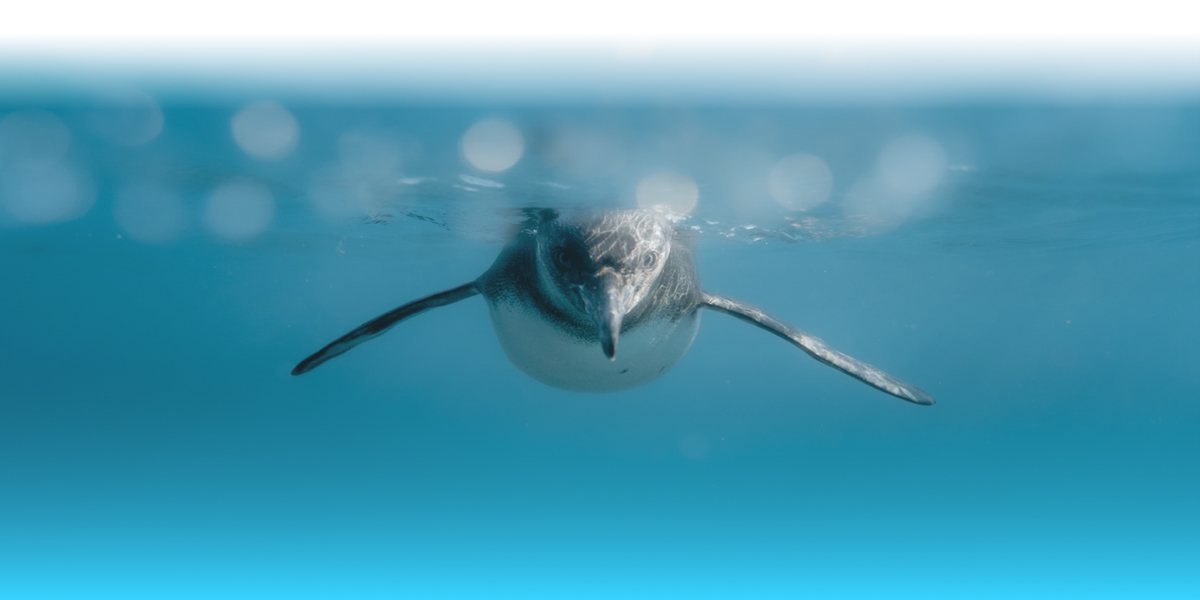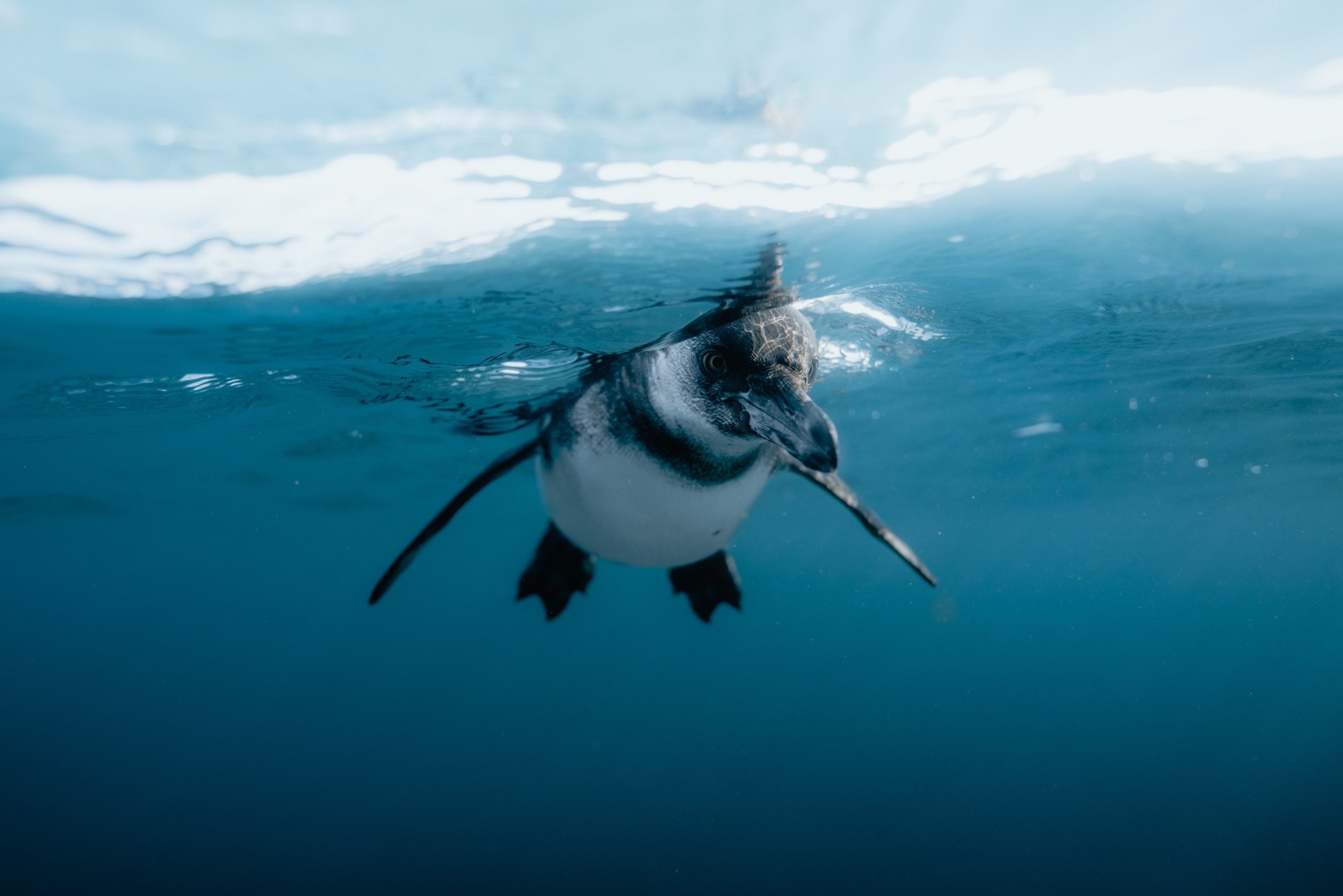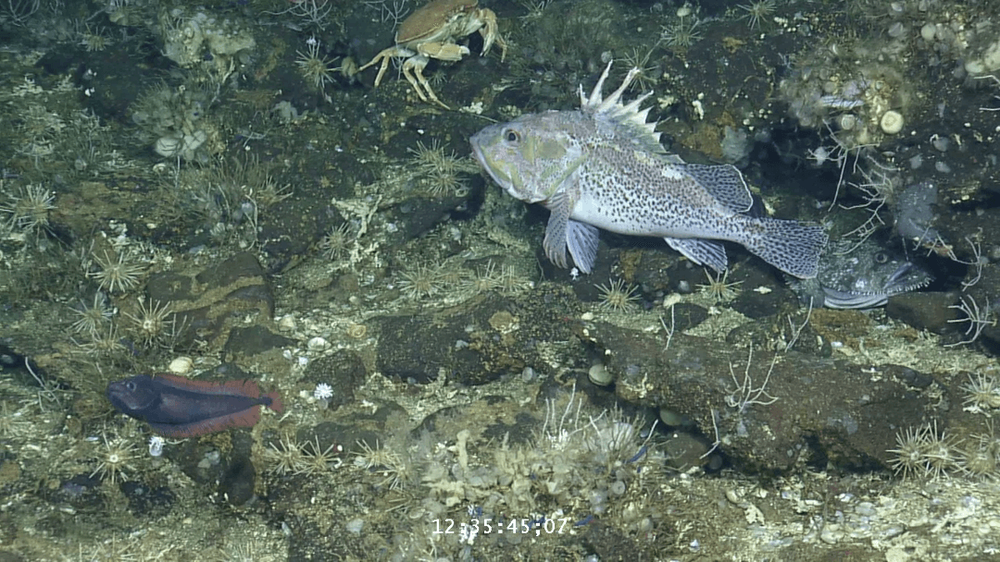
Fisheries technician Solange Andrade-Vera sits in the lab of the marine sciences building at the Charles Darwin Foundation (CDF), intent on her work. In one hand, she holds a small white object glued to a glass slide. With the other, she presses a small piece of special sandpaper, known as lapping film, down on the table. Slowly and delicately, she applies the object to the lapping film: a few deliberate swipes, a close look, followed by a few more passes over the sandpaper.
The item she holds is an otolith, the earbone of a fish. This particular otolith was collected from a mottled scorpionfish or brujo, a deep-water species of fish endemic to the eastern tropical Pacific region that includes the Galapagos. With these slow brushes over the sandpaper, a process known as polishing, Andrade-Vera hopes to gain information that will contribute to the preservation of the brujo fishery for future generations.
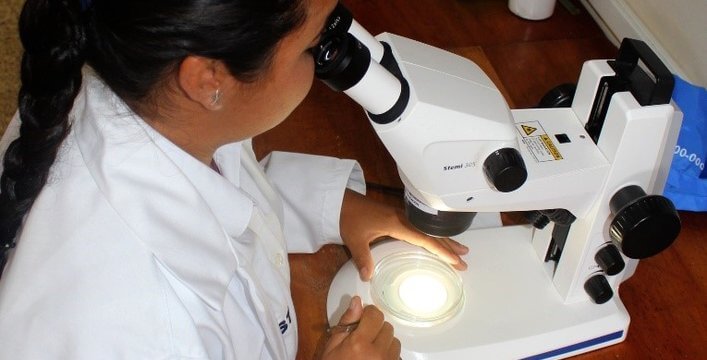
At first glance, trees, coral, tortoises and fish may not seem to have much in common. However, one special feature these organisms share is that they lay down layers of organic material as they grow. Thus, the trunks of trees, scutes of a tortoise shell, coral skeletons and fish otoliths can all be used to provide valuable information about the organisms’ age. The growth of bony fish goes through cycles of higher and lower growth that correspond to seasonal food availability and habitat conditions. When growth is slower, the layers are thinner, resulting in distinctive, readable lines. Seasonal growth changes that occur annually lead to annual rings, and, on a shorter time scale, daily patterns of growth lead to daily rings.
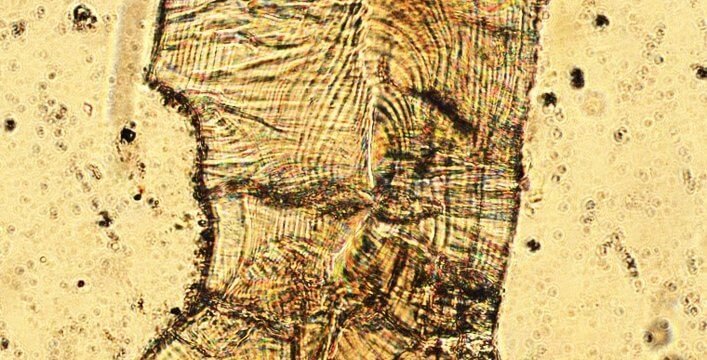
Which brings us back to Andrade-Vera, patiently slicing and polishing otoliths. Before the rings can be read, the otolith must be processed: otoliths from adults are embedded in resin and precision-sliced into cross-section using a diamond-bladed saw, whereas the otoliths from juvenile fish are glued to a glass slide and polished on both sides into cross-section for the clearest view. Because the otoliths are so small (juvenile otoliths are about the size of a grain of rice), the rings must be read using a microscope. Once the otoliths have been prepared, Andrade-Vera takes photos, and the rings are identified, counted and measured using photo-analysis software.
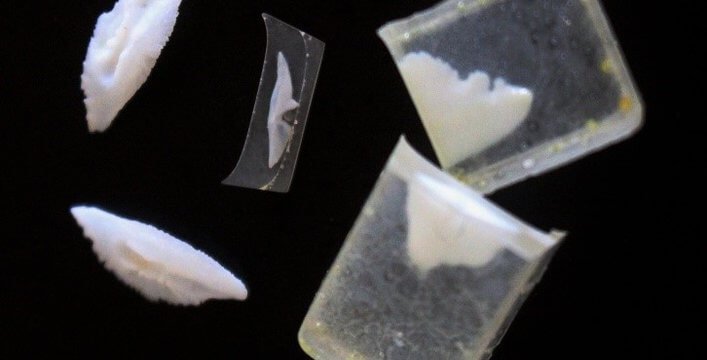
“Otolith analysis can be repetitive and takes a person who is detail-oriented, but the information gained is invaluable in understanding the biology of fisheries species,” says Jose Marín Jarrín, Principal Investigator of the Fisheries Program at CDF. “We use otolith information to identify important biological parameters that are vital for developing a sustainable fishery.”
For example, knowing the ‘age at first reproduction’, or how old a fish is when it can begin to reproduce, is paramount to establishing sustainable catch limits. When fish are caught before they have reached the age when they can reproduce, not only is that fish being removed from the fishery, but all the offspring it might have had are removed too. Catching fish after they have been reproductive for a few years means that, even though the fish is gone from the fishery, it has left behind descendants that can be caught in the future.
The Fisheries Program at CDF works to provide otolith-based biological knowledge of Galapagos fish species to the decision makers at the Galapagos National Park, other government agencies, researchers, and the public at large. The amount of biological information on fisheries species in Galapagos is low, but recent projects are beginning to fill in details about the timing of fish reproduction. Projects undertaken recently by CDF and backed by funding from the Leona M. and Harry B. Helmsley Charitable Trust have determined the age and size at maturity of brujo and Galapagos grouper, and the age and size of Galapagos grouper and yellow snapper when they settle from larval to juvenile habitat.
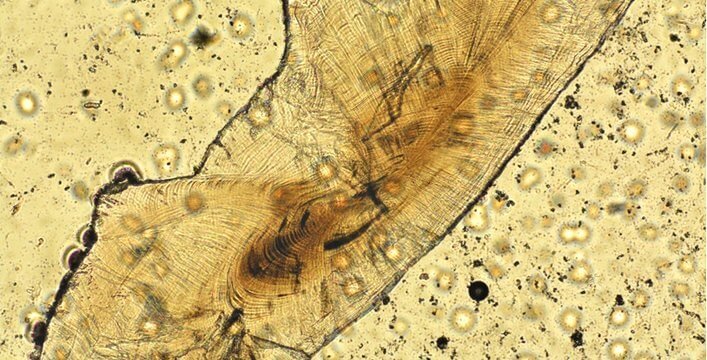
Looking forward, the CDF Fisheries Project will continue to use otoliths to expand the existing knowledge of important fisheries species. But for Andrade-Vera and Marín Jarrín, the ultimate goal of their work is to contribute to the sustainability of Galapagos fisheries.
“Absolutely, working with otoliths can sometimes be tiring for the eyes, and you’re ready when it’s time for a break. But I like the work! All the cutting, polishing and counting of rings is worth the effort when you start to explore the data to understand the answers to your questions. I began working with otoliths for my undergraduate thesis, and I’m very happy to be continuing in a field that is interesting and useful, and where not very much has been done here in Ecuador.”
— Solange Andrade-Vera
The Charles Darwin Foundation depends entirely upon donations. Please donate today to help us understand the lifecycles of Galapagos fish species.


